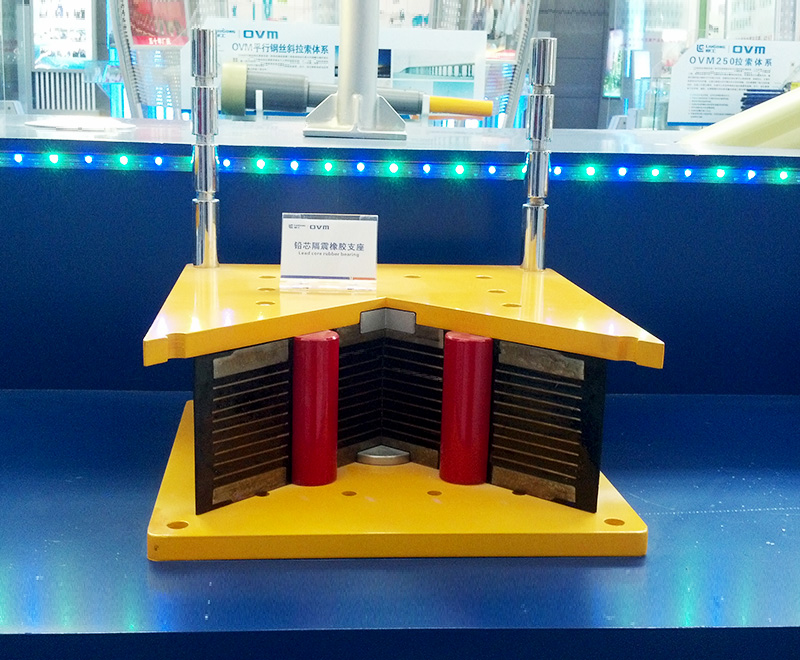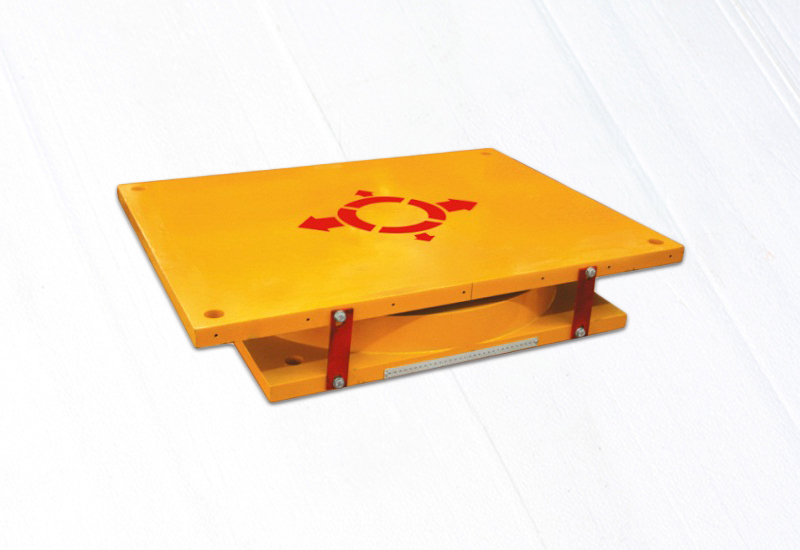➤ Fixed Type: These bearings consist of a pot / piston assembly within which an elastomeric disc is encapsulated and fitted with an anti-extrusion sealing device. These bearings enable rotation in any direction while at the structure is constrained horizontally. The function of the pot and piston parts are for fixing and securing the bearings to the bridge structure.
➤ Free sliding type: Identical in construction to the fixed bearings, these multi-directional devices are fitted with a virgin PTFE sheet in contact with an austenitic steel plate, enabling the bearing to slide in all directions.
➤ Guided Sliding type: Guided Sliding devices are identical in construction to free sliding bearings but are also fitted with one or more guides to limit the bearings movement to only one direction.



